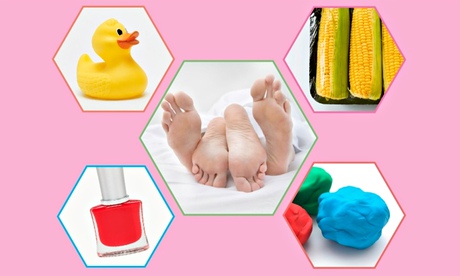
Research into the effects of phthalates on women’s libido has yielded some strange headlines. Witness the Daily Telegraph’s “Rubber ducks can kill your sex drive”. Apparently, plastic shower curtains – the bath theme is coincidental – are also to blame. These, along with countless other household items, contain phthalates (pronounced THALates), a group of chemicals usually introduced to plastics in order to increase their flexibility. The libido problem is best not addressed with a sex toy because lots of those are thought to contain phthalates too. In fact, phthalates – there are around 25 of them – proliferate in daily life to such an extent that they are present even in the enteric coating of some pills. (Last year, the EU published a draft guideline [pdf] on phthalates in medicinal products.)
The latest study, led by Dr Emily Barrett at the University of Rochester in New York State, was presented this week to the American Society for Reproductive Medicine’s annual conference in Honolulu. Barrett measured the levels of phthalates in the urine of 360 pregnant women. She collected further evidence by interview, asking the same women how often they lost interest in sex in the months leading up to their pregnancy. Asking people to express publicly a memory of their feelings from several months ago may not appear to be the most watertight research method. However, each of the 360 women showed traces of phthalates in their urine. Those with the most were two and a half times as likely to have low libido as those with the least.
Barrett’s study focused only on women, although previous research by the same university (published in 2009) explored the link between phthalates and the “feminisation” of boys. Other studies have shown possible links to low sperm count, early onset of puberty (which can increase the risk of breast cancer) and diabetes. The young are particularly vulnerable. Phthalates can cross the human placenta. Last month, researchers at Columbia University published a study – again from a small sample – that linked asthma to high levels of phthalates in the womb to childhood. Before that a larger study had found a link between phthalates and low blood pressure. Some phthalates disrupt hormones.
Maybe phthalates are the new parabens. In August, they were found in some brands of loom band charms. And they certainly proliferate elsewhere, found over the last decade in modelling clay, vinyl flooring, nail polish, household cleaners, pencil cases, squeezable plastic bottles, rubber clogs, raincoats, blood transfusion bags, indoor air and dust and, in the case of the phthalate DEHP in particular, the packaging of food. The government’s committee on toxocity concluded that there is no risk to human health from dietary exposure alone. Nevertheless, says a spokesman from the Food Standards Authority, “There are strict rules set out in European legislation around how phthalates are used in food contact plastics, particularly those intended for use with infants and young children. Labelling is also required where consumers may need to be alerted to particular restrictions, for example to avoid use with fatty foods.”
The use of phthalates is subject to EU restrictions, but this is an area of both shifting research and shifting regulation. In the meantime, easy with that rubber duck.

